
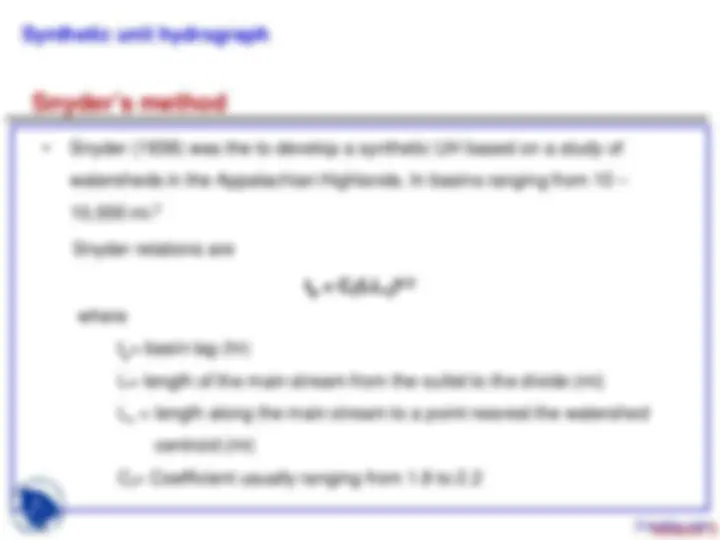
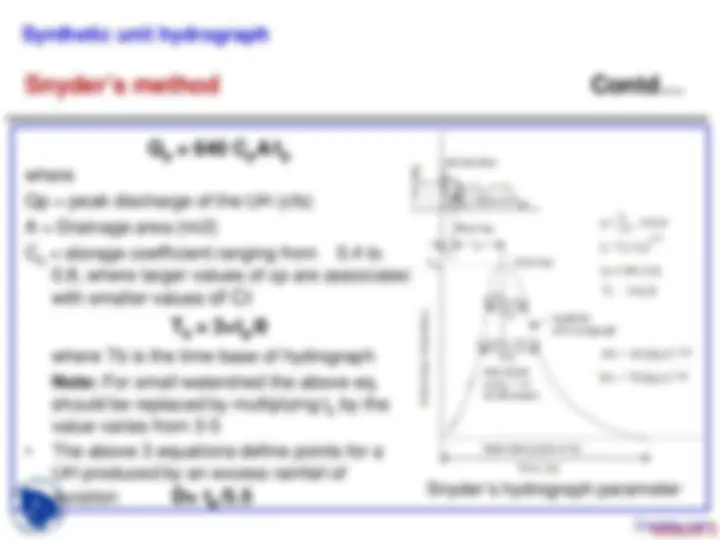
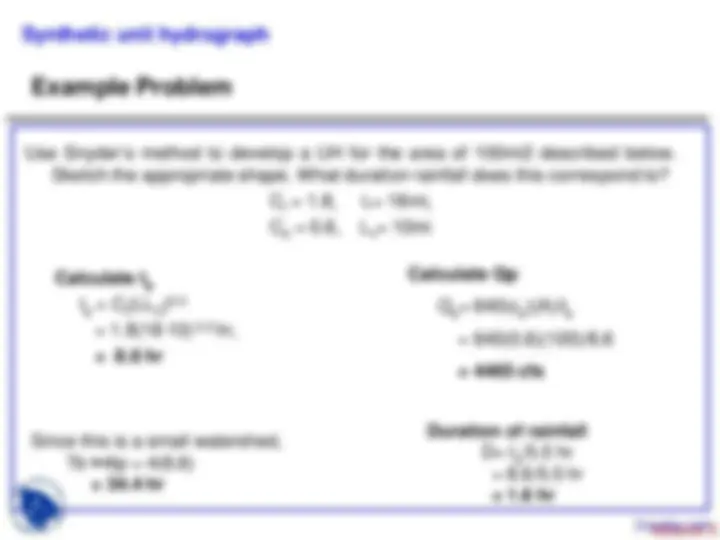
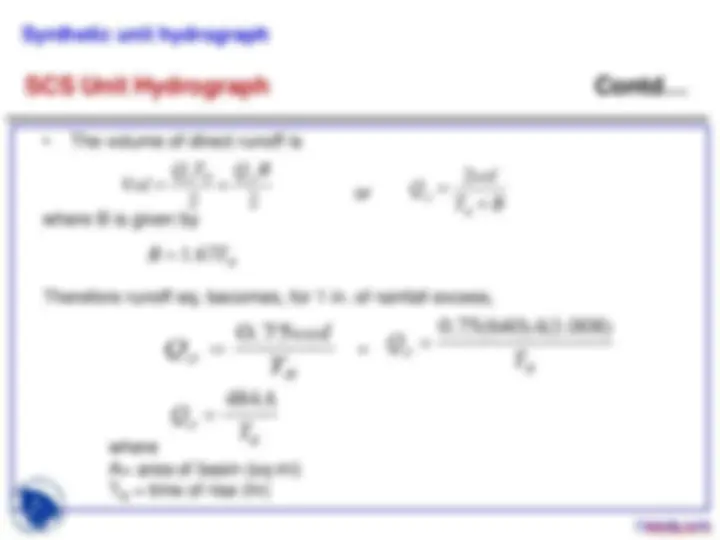
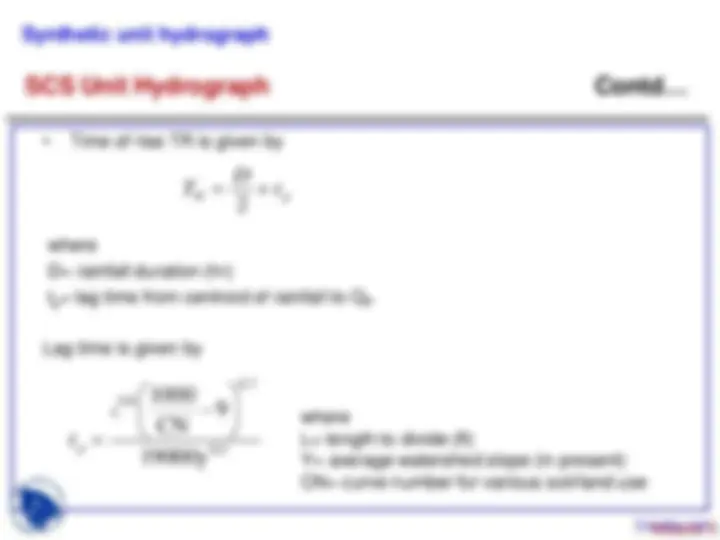
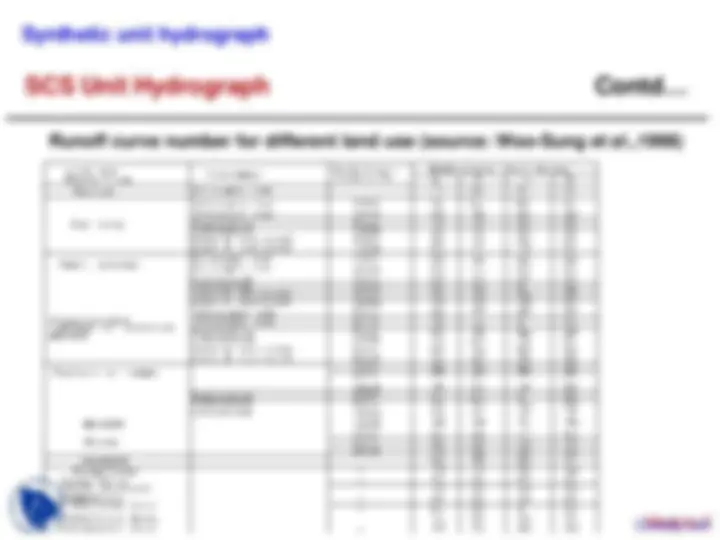
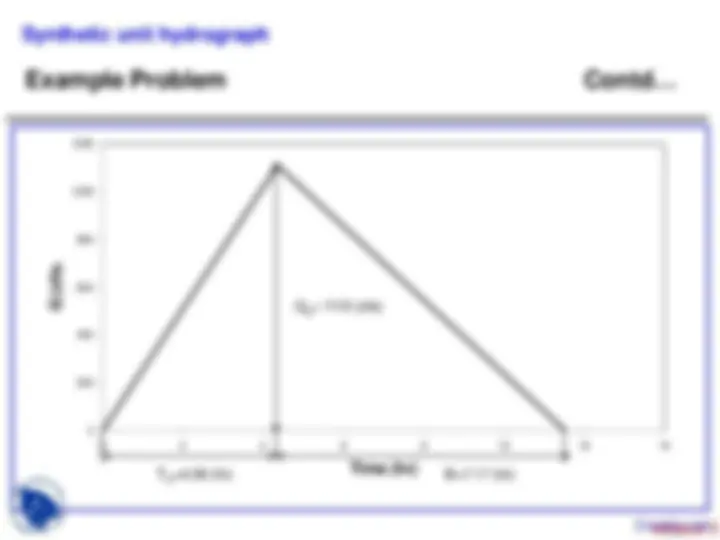
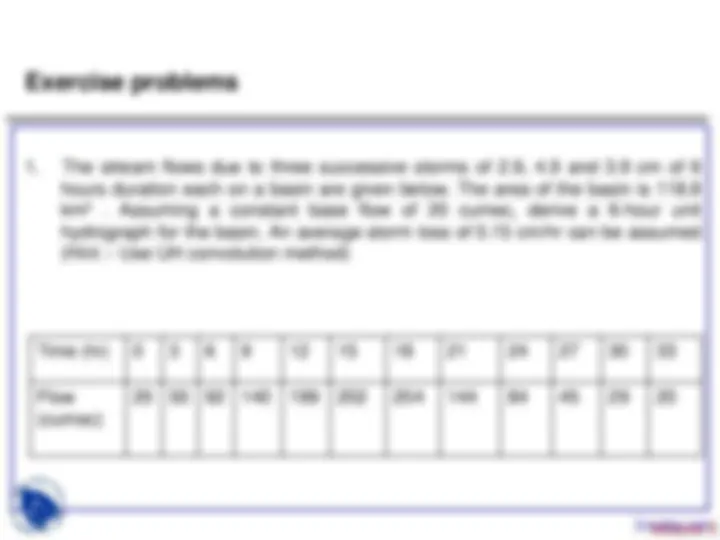
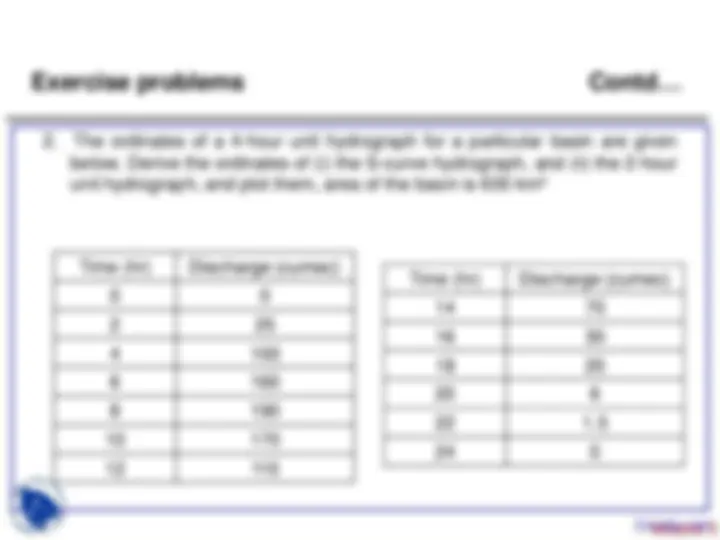


Study with the several resources on Docsity

Earn points by helping other students or get them with a premium plan


Prepare for your exams
Study with the several resources on Docsity

Earn points to download
Earn points by helping other students or get them with a premium plan
Community
Ask the community for help and clear up your study doubts
Discover the best universities in your country according to Docsity users
Free resources
Download our free guides on studying techniques, anxiety management strategies, and thesis advice from Docsity tutors
These are the Lecture Slides of Advanced Hydrology which includes Method of Matching Points, Method of Moments, Maximum Likelihood Method, Population Parameter, Sample Parameter, Estimation etc.Key important points are: Synthetic Unit Hydrograph, Small Number of Streams, Multiple Storms, Drainage Basins, Unit Hydrographs, Meteorologically, Application
Typology: Slides
1 / 17

This page cannot be seen from the preview
Don't miss anything!










Docsity.com
Docsity.com Module 3
where
Qp = peak discharge of the UH (cfs)
A = Drainage area (mi2)
Cp = storage coefficient ranging from 0.4 to 0.8, where larger values of cp are associated
where Tb is the time base of hydrograph Note: For small watershed the above eq. should be replaced by multiplying t (^) p by the value varies from 3-
Docsity.com
Use Snyder’s method to develop a UH for the area of 100mi2 described below. Sketch the appropriate shape. What duration rainfall does this correspond to? Ct = 1.8, L= 18mi, Cp = 0.6, L (^) c= 10mi
Calculate t (^) p t (^) p = Ct (LL (^) C) 0. = 1.8(18·10) 0.3^ hr, = 8.6 hr
Calculate Qp Qp = 640(c (^) p )(A)/t (^) p = 640(0.6)(100)/8. = 4465 cfs
Since this is a small watershed, Tb ≈4tp = 4(8.6) = 34.4 hr
Duration of rainfall D= t (^) p /5.5 hr = 8.6/5.5 hr = 1.6 hr Docsity.com
tp
Qp
T (^) R B SCS triangular UH
Docsity.com
or where B is given by
Therefore runoff eq. becomes, for 1 in. of rainfall excess,
R
B = 1. 67 T R
R
p T
vol Q
R
p T
A Q
where A= area of basin (sq mi) TR = time of rise (hr)
R
p T
A Q
Docsity.com
Runoff curve number for different land use (source: Woo-Sung et al.,1998)
Module 3
Docsity.com
Use the SCS method to develop a UH for the area of 10 mi^2 described below. Use rainfall duration of D = 2 hr Ct = 1.8, L= 5mi, Cp = 0.6, L (^) c= 2mi The watershed consist CN = 78 and the average slope in the watershed is 100 ft/mi. Sketch the resulting SCS triangular hydrograph.
Find t (^) p by the eq.
Convert L= 5mi, or (5*5280 ft/mi) = 26400 ft. Slope is 100 ft/mi, so y = (100ft/mi) (1mi/5280 ft)(100%) = 1.9% Substituting these values in eq. of tp , we get t (^) p = 3.36 hr
L
19000y
9 CN
1000
− tp =
Docsity.com
0
200
400
600
800
1000
1200
0 2 4 6 8 10 12 14
Q (cfs
)
Time (hr)
Qp = 1110 (cfs)
T (^) R=4.36 (hr) B=7.17 (hr)
Docsity.com
Time (hr) 0 3 6 9 12 15 18 21 24 27 30 33
Flow (cumec)
Docsity.com Module 3
Time (hr) 0 9 18 27 36 45 54 63 72 81 90
Flow (cumec)
Docsity.com
This module presents the concept of Rainfall-Runoff analysis, or the
conversion of precipitation to runoff or streamflow, which is a central problem of engineering hydrology.
Gross rainfall must be adjusted for losses to infiltration, evaporation and
depression storage to obtain rainfall excess, which equals Direct Runoff (DRO).
The concept of the Unit hydrograph allows for the conversion of rainfall
excess into a basin hydrograph, through lagging procedure called hydrograph convolution.
The concept of synthetic hydrograph allows the construction of hydrograph,
where no streamflow data are available for the particular catchment.
Highlights in the Module
Docsity.com